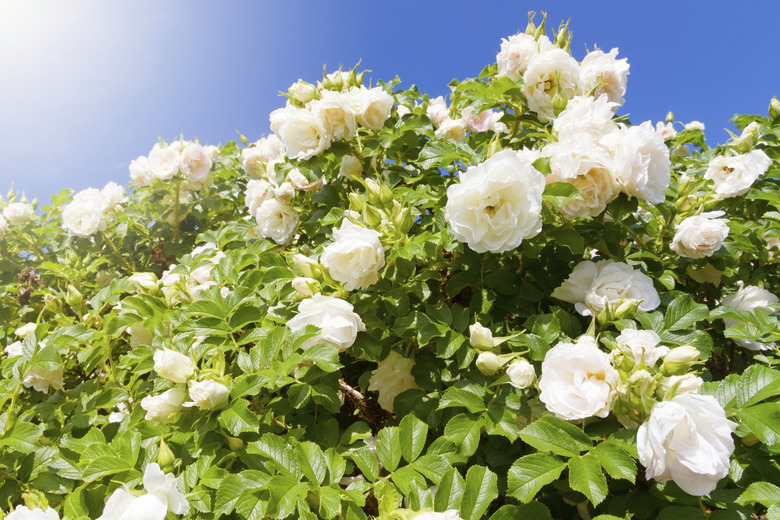How To Propagate Rosa Rugosa
Rugosa roses (Rosa rugosa) are rugged, old-fashioned roses that can flourish in nearly any garden. They're extremely resistant to cold — many varieties are hardy in U.S. Department of Agriculture hardiness zones 2 to 9 — and they're easily propagated from cuttings, making them a reliable performer for home gardeners.
Choosing Cuttings
The best time to take cuttings for propagation is in the late fall or early winter, when the weather is cool but when withered flowers are still on the plant. Take cuttings from the current year's growth, choosing stems that are pliable but firm, about the diameter of a pencil, preferably with a flower or developing hip attached. Softwood cuttings may be taken earlier in the year, but fall cuttings are more likely to root successfully. Sterilize your pruning tool blades before taking the cuttings so you don't spread disease. Wipe the blades off with alcohol and allow them to dry.
Preparation of Cuttings
Cut 6-to-8-inch stems from the plant with a sharp knife, making the cut at a 45-degree angle. Remove leaves from the bottom portion of the cutting and remove any dried flowers. After taking the cuttings, protect them from any extremes of temperature, and don't allow them to dry out before you plant them in the location where you plan to root them. Dipping the bottom end of the cutting in rooting hormone may increase the chances that the cutting will take root, but it's possible to successfully propagate from cuttings without the use of hormones. So you do not contaminate the container of rooting hormone, shake a small amount out on a paper towel and roll the cuttings in the mixture covering the bottom half that will be planted.
Rooting Location and Transplanting
For rooting the cuttings, choose an area of the garden that is sheltered and that gets plenty of indirect sunlight. The ideal medium in which to plant the cuttings is sandy, well-drained soil that's been augmented with peat moss or composted bark. Make a hole or trench in which to stick the cuttings, planting them so that about half the cutting is beneath the soil level. Firmly compact the soil around the cutting and water it thoroughly; the cuttings should not dry out as they're developing roots. If all goes well, they'll develop roots by the spring, but they shouldn't be transplanted to their permanent locations until the following fall.
Propagation from Suckers
Rugosa roses have a tendency to develop suckers, shoots that emerge from the base of the plant, and these suckers may be used to produce new plants. In the fall, sever the root that connects the sucker to the parent plant with the blade of a sharp spade or trowel, but leave the sucker in place. By spring, the sucker will have produced roots of its own and will be independent from the parent plant so that you can transplant it to a new location. Because of this suckering nature, the rose has a tendency to become invasive in some locations.
